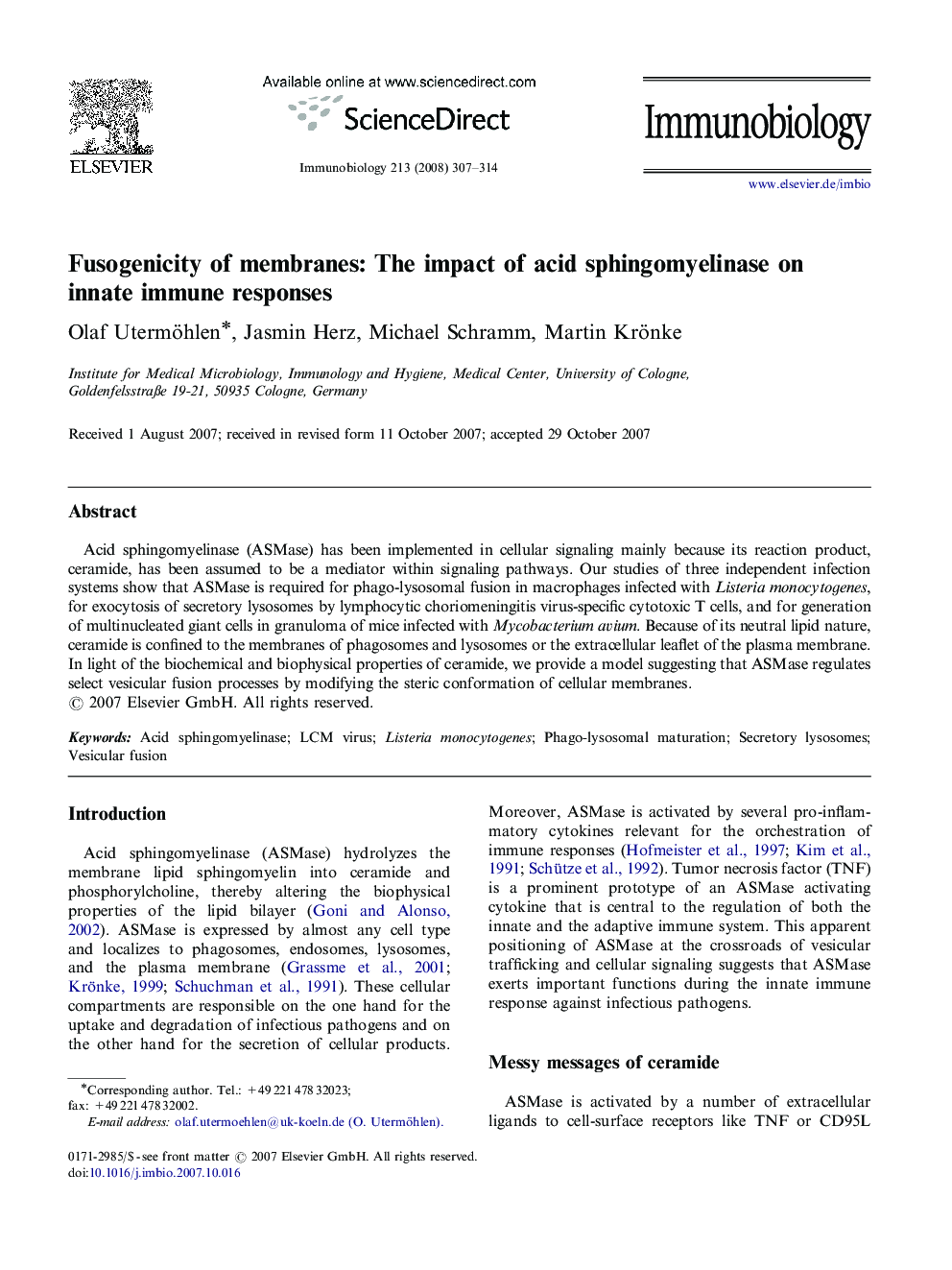| Article ID | Journal | Published Year | Pages | File Type |
|---|---|---|---|---|
| 2183850 | Immunobiology | 2008 | 8 Pages |
Acid sphingomyelinase (ASMase) has been implemented in cellular signaling mainly because its reaction product, ceramide, has been assumed to be a mediator within signaling pathways. Our studies of three independent infection systems show that ASMase is required for phago-lysosomal fusion in macrophages infected with Listeria monocytogenes, for exocytosis of secretory lysosomes by lymphocytic choriomeningitis virus-specific cytotoxic T cells, and for generation of multinucleated giant cells in granuloma of mice infected with Mycobacterium avium. Because of its neutral lipid nature, ceramide is confined to the membranes of phagosomes and lysosomes or the extracellular leaflet of the plasma membrane. In light of the biochemical and biophysical properties of ceramide, we provide a model suggesting that ASMase regulates select vesicular fusion processes by modifying the steric conformation of cellular membranes.
